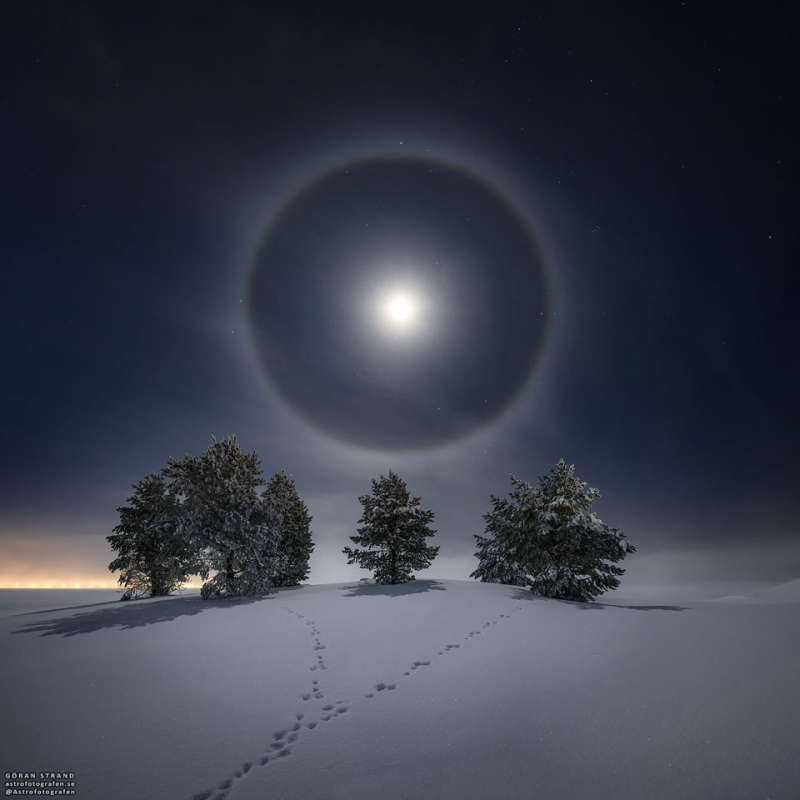
|
Credit & Copyright: Göran Strand
Explanation:
Have you ever seen a halo around the
Moon?
This fairly common sight occurs when
high thin clouds containing millions of tiny
ice crystals cover much of the sky.
Each ice crystal acts like a miniature lens.
Because
most
of the crystals have a similar
elongated hexagonal shape,
light entering one crystal face and exiting
through the opposing face refracts 22 degrees,
which corresponds to the radius of the Moon Halo.
A similar Sun Halo
may be visible during the day.
Exactly
how ice-crystals form
in clouds remains a topic of research.
In the
featured image taken last week from
cstersund,
Sweden,
a complete
lunar halo
was captured over
snowy trees and
rabbit tracks.
APOD is available via Instagram: in
English,
Indonesian,
Persian, and
Portuguese
|
January February March April May June July August September October November December |
| |||||||||||||||||||||||||||||||||||||||||
NASA Web Site Statements, Warnings, and Disclaimers
NASA Official: Jay Norris. Specific rights apply.
A service of: LHEA at NASA / GSFC
& Michigan Tech. U.
Based on Astronomy Picture
Of the Day
Publications with keywords: halo
Publications with words: halo
See also:
